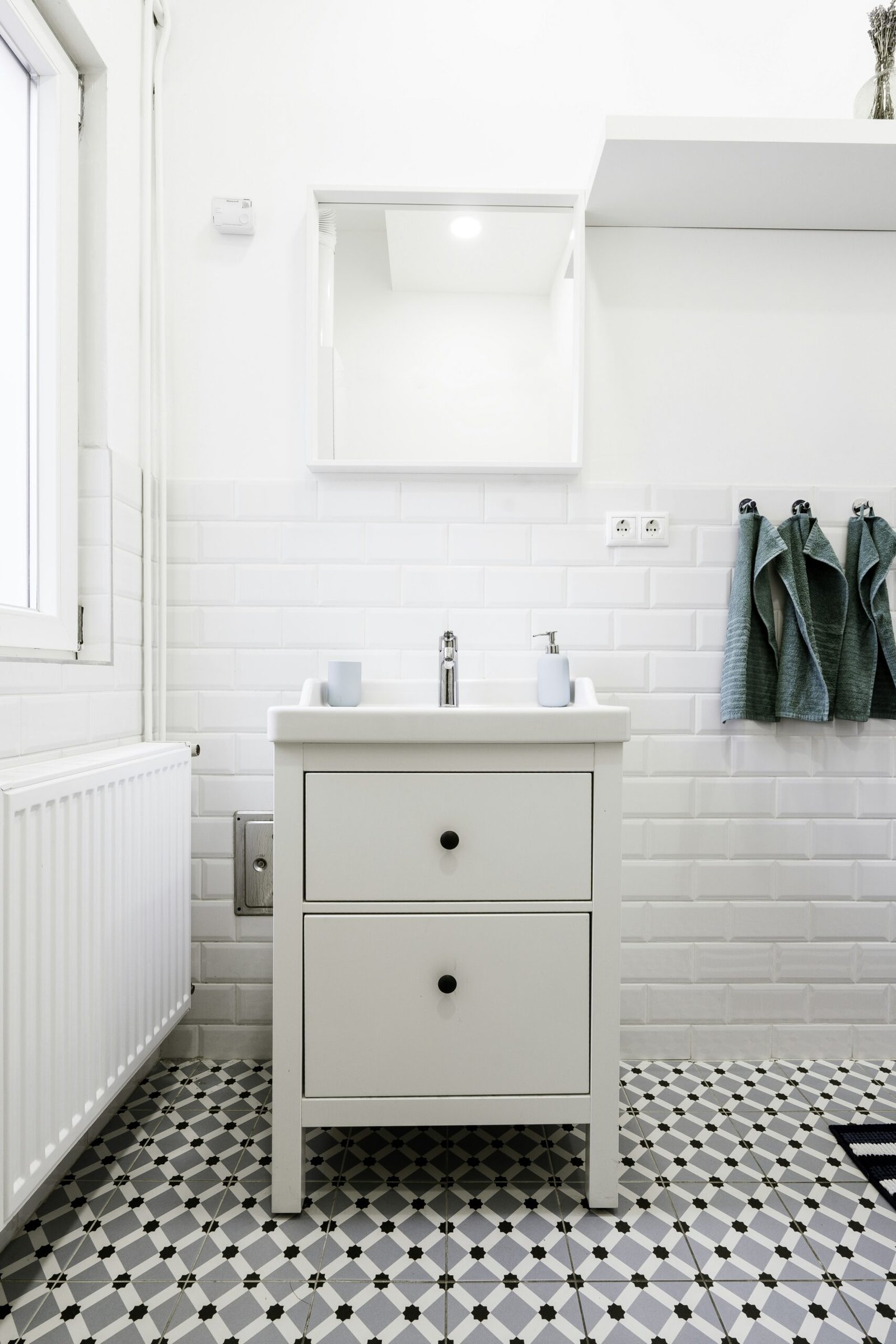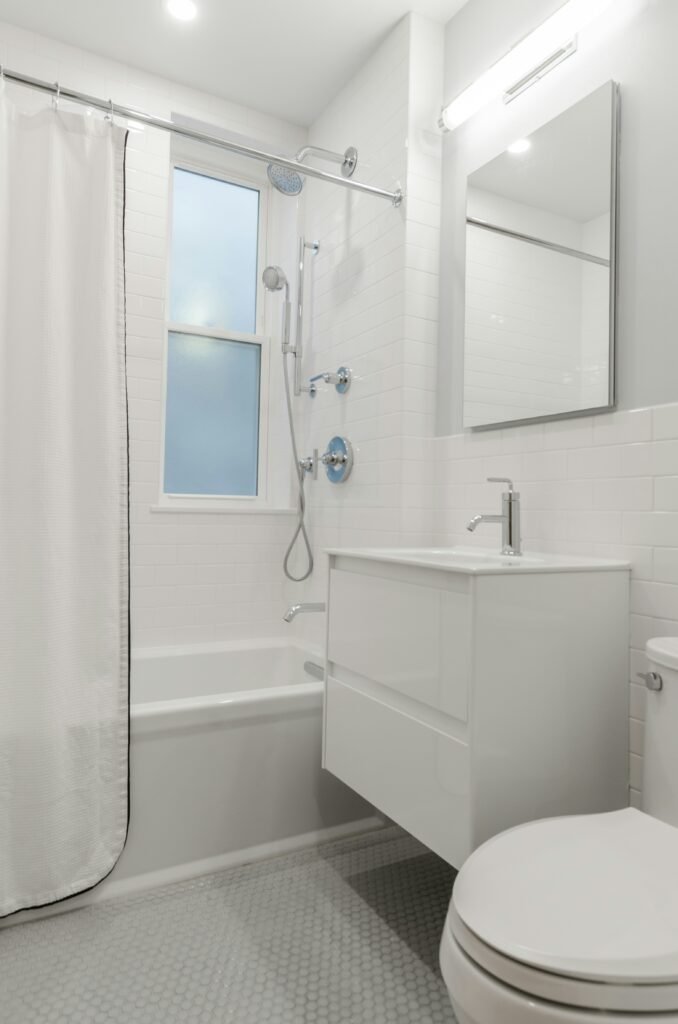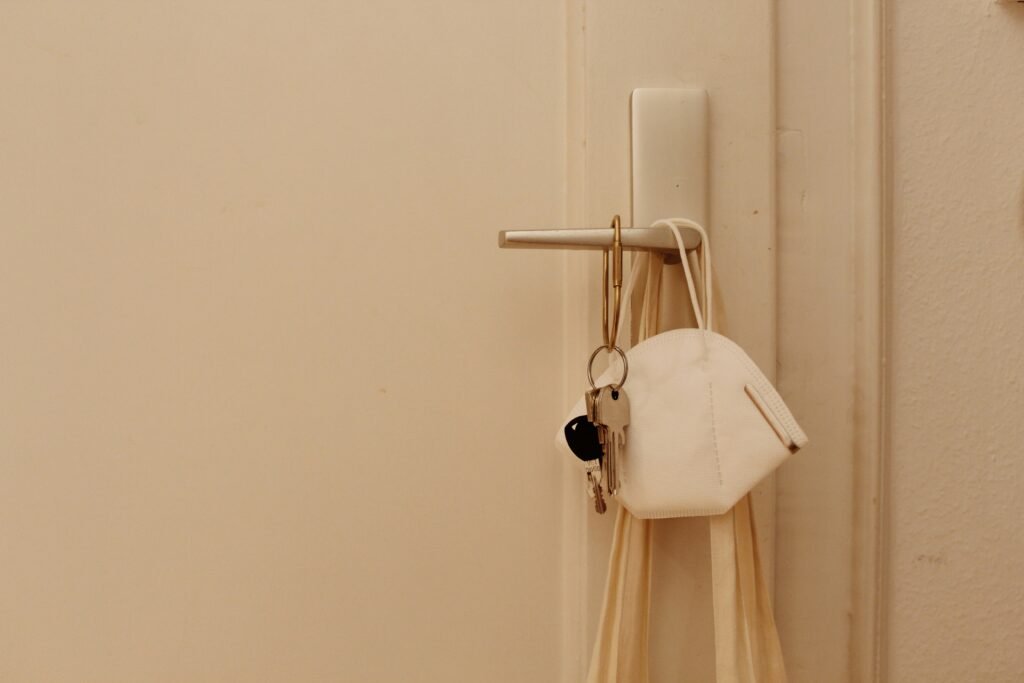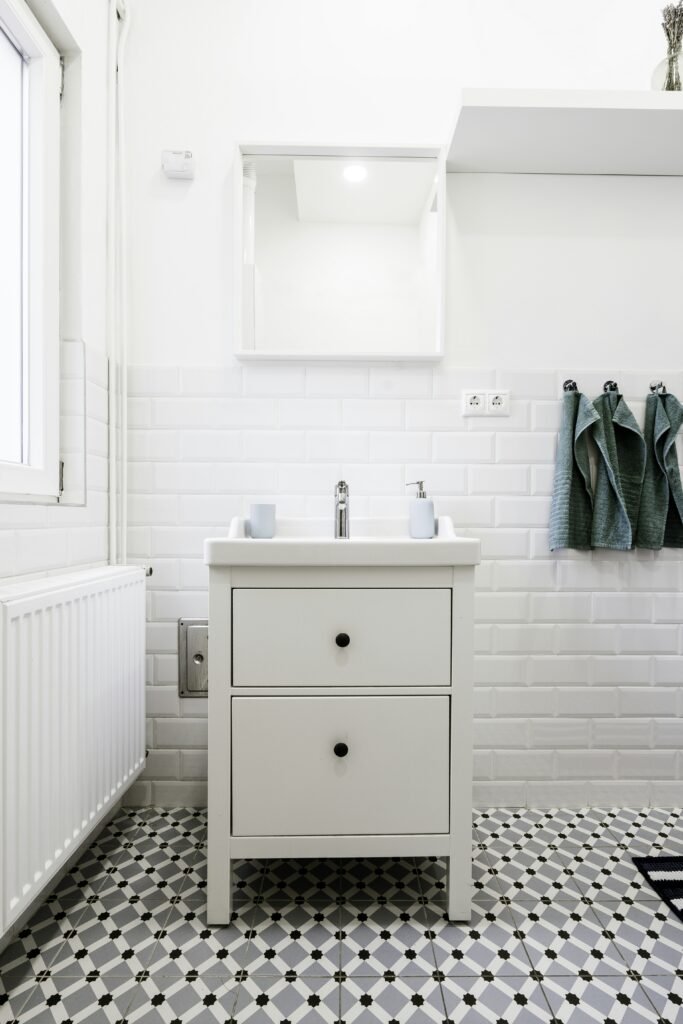
In this article, you will discover the ins and outs of ensuring a safe bathroom experience. Whether you’re a family with young children or an individual with limited mobility, it’s essential to prioritize bathroom safety to prevent accidents and promote peace of mind. From installing grab bars to choosing slip-resistant mats, we will explore practical tips and ideas to create a secure and comfortable bathroom environment for everyone in your household. So let’s get started and make your bathroom a safer place!

This image is property of images.unsplash.com.
Slip Prevention
Slippery surfaces in the bathroom pose a serious risk of falls and injuries. To prevent falls, it is important to take proactive measures to make your bathroom a safer place. One effective way to minimize the risk of slipping is by using nonslip mats. These mats are specifically designed with a textured surface that provides traction and grip, making it easier for you to maintain your balance while walking on wet or slippery surfaces in the bathroom.
In addition to nonslip mats, it is also recommended to install grab bars in strategic locations within your bathroom. These grab bars can provide additional support and stability, especially when getting in and out of the shower or tub or using the toilet. Grab bars should be securely mounted to the wall and positioned at a convenient height for easy reach. By having these grab bars in place, you can have peace of mind knowing that you have something to hold on to if you feel unsteady or lose your balance.
Another important aspect of slip prevention is keeping the floors in your bathroom dry. Whether it’s a shower leak, a spilled liquid, or excess water from bathing, wet floors can be hazardous. To avoid any accidents, make sure to dry any wet areas promptly. Having a designated towel or mop specifically for the bathroom can help in absorbing water and preventing slippery surfaces. Remember, a few seconds spent on drying the floor can save you from potential slips and falls.
Accessibility
Ensuring that your bathroom is accessible is crucial, especially for individuals with mobility issues or disabilities. One way to enhance accessibility is by installing an accessible shower or tub. These specially designed fixtures have low thresholds, making it easier to enter and exit without having to navigate over a high ledge. Additionally, they often feature built-in seating, grab bars, and handheld showerheads for added convenience and safety.
Another important consideration is the height of the toilet. For individuals with limited mobility or who use mobility aids, a raised toilet seat can be beneficial. These seats can increase the height of the toilet, making it easier to sit down and stand up. They are usually easy to install and can provide significant relief for those with reduced mobility or joint pain.
Handheld showerheads are another excellent addition to an accessible bathroom. These showerheads can be easily adjusted and directed, allowing you to comfortably shower while sitting or while using a shower chair. With a longer hose and a variety of spray settings, handheld showerheads provide greater flexibility and control, ensuring a safer and more enjoyable bathing experience.
Proper Lighting
Proper lighting is vital in any bathroom, as it helps improve visibility and reduces the risk of accidents. Installing bright lights in the bathroom can help ensure that you clearly see your surroundings, making it easier to navigate and perform daily tasks. Bright lights also create a more inviting and pleasant atmosphere in the bathroom.
Furthermore, having nightlights in your bathroom can greatly contribute to your safety, especially during nighttime visits. These small light fixtures provide a soft glow, illuminating the space without being too bright or disruptive. Nightlights can be particularly helpful for elderly individuals or anyone who may need to use the bathroom during the night, as they prevent fumbling around in the dark and help maintain balance and stability.
Additionally, it is important to ensure that light switches are easily accessible. Whether you have the light switch located inside or outside the bathroom, make sure it is within reach and easy to operate. Opting for larger, illuminated switches can be advantageous, as they are easier to locate and use even in low-light conditions.
Medication Safety
Many people keep their medication in their bathroom, making it essential to consider medication safety when focusing on bathroom safety as a whole. Properly storing medications is crucial to prevent accidental ingestion, especially by children or pets. Store medications in a secure, locked cabinet or drawer that is out of reach from curious hands. This prevents accidental consumption and minimizes the risk of medication-related accidents.
In addition to proper storage, it is important to keep medications organized and easily identifiable. Pill organizers can be helpful in ensuring that you take the correct dosage at the right time, while also making it easier to track your medication schedule. Labeling medications and keeping them in their original packaging can aid in identifying the correct medication, dosage, and potential side effects.
By prioritizing medication safety in your bathroom, you can minimize the risk of accidental ingestion or confusion, ensuring that your bathroom remains a safe space for everyone.

This image is property of images.unsplash.com.
Fall Prevention
Falls are a significant concern in the bathroom, particularly for older adults or individuals with impaired mobility. Keeping paths clear is essential to minimize the risk of tripping and falling. Ensure that items are properly stored and organized so that there are no obstacles on the floor. Keep towels, clothing, and any other items off the floor to maintain clear and safe pathways.
Using a shower chair is another effective way to prevent falls in the bathroom. A shower chair provides a stable and secure seating option while bathing, reducing the risk of slips and falls. Look for shower chairs that are specifically designed with anti-slip features and adjustable height settings to cater to your specific needs and preferences.
Installing a raised toilet seat is also beneficial for fall prevention, especially for individuals with limited mobility or who have difficulty sitting down or standing up. Raised toilet seats increase the height of the toilet, making it easier to use and reducing the strain on joints and muscles.
By taking these measures, you can significantly decrease the risk of falls in the bathroom and create a safer environment for everyone.
Temperature Regulation
Maintaining proper temperature regulation in your bathroom is crucial to ensure the comfort and safety of all users. One important step is to set the water heater temperature at an appropriate level. Higher water temperatures can lead to burns and scalds, especially when it comes to children or individuals with sensitive skin. Setting the water heater temperature to around 120 degrees Fahrenheit (49 degrees Celsius) can help prevent accidental scalding.
Using a bath thermometer can provide an additional layer of safety when it comes to water temperature. These thermometers are designed specifically for measuring the temperature of bathwater. By using a bath thermometer, you can ensure that the water temperature is within a safe and comfortable range before getting in. This is particularly important for individuals who may have difficulty sensing temperature changes.
Before bathing, it is recommended to check the water temperature with your hand or a thermometer. This simple step can help you identify any inconsistencies or issues with the water before you or someone else steps into the bath or shower. This is especially important if your bathroom experiences fluctuations in water temperature or has an older plumbing system. By being mindful of the water temperature, you can prevent burns or discomfort during your bathing routine.

This image is property of images.unsplash.com.
Childproofing
If you have young children in your household, childproofing your bathroom is essential to keep them safe from potential hazards. One crucial step is to lock medicine cabinets and keep all medications out of reach. Children are naturally curious and may be tempted to explore what is inside these cabinets. By ensuring that the cabinets are securely locked, you can prevent accidental ingestion and potential harm.
Securing toilet lids is another important aspect of childproofing. Toddlers, in particular, may be fascinated by the toilet and may attempt to play or reach into it. By installing a lid lock or keeping the bathroom door closed, you can prevent accidents or unsanitary situations.
Covering electrical outlets is also crucial to prevent accidental electrocution. Children may be tempted to stick objects into outlets, which can lead to severe injuries. Using outlet covers or safety plugs can effectively block access to electrical outlets and minimize the risk of electrical accidents.
By implementing these childproofing measures, you can create a safe and child-friendly bathroom environment, providing you with peace of mind and ensuring the well-being of your little ones.
Emergency Preparedness
Being prepared for emergencies is essential in every aspect of life, including bathroom safety. Having a phone nearby in case of accidents or emergencies is a crucial step in ensuring timely and efficient assistance if needed. Keep a landline or a mobile phone within easy reach in your bathroom, so you can quickly dial emergency services or contact someone for help if necessary.
In addition to having a phone nearby, consider installing a bathroom emergency alarm. These alarms are specifically designed for bathrooms and provide an easy way to call for help in case of a fall or other emergency situation. They typically come with a pull cord or a button that, when activated, triggers an alarm or alerts a monitoring service. Having this additional layer of safety can help ensure that you receive prompt assistance if ever you need it.
Lastly, keep emergency contact numbers accessible in your bathroom. This can include important numbers such as the local emergency services, your doctor’s office, or a trusted neighbor or friend. Write down these numbers on a laminated card and keep it in a visible and easily accessible location, such as on the inside of your medicine cabinet or near your phone. This way, you can quickly reach out for help or provide vital information to first responders if an emergency occurs.
By prioritizing emergency preparedness, you can be proactive in dealing with unforeseen situations and minimize potential risks in your bathroom.
Bathroom Organization
Maintaining a well-organized bathroom not only helps create a visually pleasing space but also contributes to overall safety. Keeping frequently used items within reach ensures that you can access them easily, reducing the need to reach or bend over, which can lead to accidents or falls.
Using storage containers can greatly assist in organizing and decluttering your bathroom. There are various options available, including baskets, bins, and drawer dividers. Utilize these containers to categorize and store items such as toiletries, medications, and cleaning supplies. By having designated places for these items, you can easily locate what you need without having to search through cluttered spaces.
To enhance organization and prevent confusion, consider labeling medications and toiletries. Identify each item with clear, legible labels to ensure that you and your household members can easily identify and access the correct products. This is especially important if you have multiple prescription medications or similar-looking containers.
By maintaining a well-organized bathroom, you not only create a visually appealing space but also contribute to a safer and more efficient environment.
Assistive Devices
Incorporating assistive devices in your bathroom can greatly enhance safety and accessibility, especially for individuals with mobility challenges. The following devices are worth considering:
-
Shower benches or stools: These devices provide a stable seating surface while showering and reduce the risk of slips and falls. Look for models with non-slip feet and adjustable height options for optimum comfort and safety.
-
Handheld showerheads: These showerheads come with a long hose and can be detached from the wall mounting. They allow for greater flexibility and control while showering, especially for individuals who may have difficulty standing for extended periods. With adjustable spray settings and easy maneuverability, handheld showerheads provide an enhanced bathing experience.
-
Handrails: Installing handrails in your bathroom can greatly improve safety and stability. Handrails can be mounted near the toilet, in the shower or tub, or along the walls for added support when moving around the bathroom. Ensure that the handrails are securely fastened to the wall and able to withstand the weight and force applied during use.
By incorporating these assistive devices, you can significantly improve accessibility, enhance safety, and promote independence in your bathroom environment.
By implementing these various measures and practices, you can create a safe and comfortable bathroom space for yourself and your household. Remember, bathroom safety is all about prevention and being proactive. By taking the time to assess your bathroom and make necessary adjustments, you can minimize the risk of accidents, falls, and injuries, ensuring that your bathroom remains a relaxing and secure haven.

